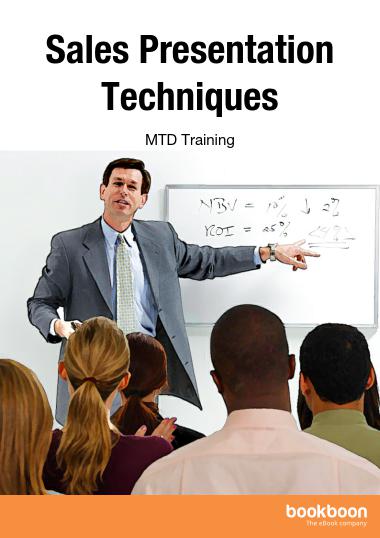How to deliver an effective sales presentation in Bangladesh

You may think of a sales presentation as a formal talk given in front of a room full of the company you are hoping to land as a new customer. Just you, armed with your PowerPoint and laser pointer, facing the room of decision-makers, hoping to land the sale. While it’s true that this is a form of one, a sales presentation actually occurs anytime that you interact with a potential or existing customer. In Bangladesh, it is very common to also give a sales presentation via the phone or by email. You are continually representing yourself, your product, and your organisation when you call, write to, or speak to your customers. Learning to do so well will help you make effective, successful sales presentations.
Understanding the sales process
The first area to focus on is the general sales process and how presentations fit into that process. Significant preparation and effort are required before the sales presentation in order to help you be successful in any format. You will need to research your target organisations and prospects, identify what their challenges are, then determine how your products or services can answer those challenges or deal with those problems. You must have all of this information before you can reach the sales presentation step.
Skills that effective sales presentations require
Whether you will be making a sales presentation in writing, by telephone, or in person, there are certain skills that you will need to make it as effective as you can. These include different aspects of communication, research, and organisation. The good news is that all of these skills can be learned with effort and practice. Once you learn them, you will find that they will also help you in other areas of your work and in your life.
Sales presentation techniques
Written sales presentations
In many cases, the first impression you and your organisation will make on a potential customer will be in writing. This could come in the form of an email, private message, letter or advertisement of some sort. This is usually the first step in the sales presentation process. When you write a letter or email to a potential customer, you are in control of the impression that you leave with the prospect.
3 quick tips for written presentations:
 • Always check the details before you send the letter. You should be certain that you have the
• Always check the details before you send the letter. You should be certain that you have the
correct title, the correct spelling of their name, and any professional qualifications that you
know are accurate.
• Keep your sentences short and direct. Use bullet points or numbers if you have several
points to make. You should keep the letter to one side of the page since you’ll be keeping it
to the main points.
• Remember that you want the letter to be read in 20 to 30 seconds so that your prospect will
be able to judge whether or not they want more information pretty quickly.
Telephone Sales Presentation Techniques
If you work with clients on a global scale, chances are, you will be making many of your sales presentations via telephone. As telephone sales presentations limit you in the ways you can communicate with a prospective customer, it is very important that what you do communicate to them is well organised, very well targeted, and explicit in how your product or service will help the prospect or the organisation they represent.
The eight basic steps to a successful telephone presentation:
 • Preparation
• Preparation
• Introduction
• Questioning
• Objectivity
• Listen and interpret
• Inform and educate
• Involve and coordinate
• Keep in touch
Face-to-Face Sales Presentations
Ideally, we would always have the time and resources needed to do a face-to-face presentation for every potential customer as it allows us to use all of the means of communication available to us. When you do get the chance to make a face-to-face sales presentation, there are several tips that you can use to help ensure that you are as prepared as possible for your face-to-face presentation: 
- Prepare a script for the presentation, both in written and outline formats.
- Script the answers to questions that you think are likely to arise.
Practice delivering the presentation to several people in order to get feedback and/or, consider videotaping yourself giving the presentation to review it. - Prepare all printed materials for your audience, including extra copies for those unexpected attendees.
- Arrange for any necessary equipment you may need and have a contingency plan should any equipment malfunction, eg: reading off of written material.
- Confirm that anyone needed to make the purchasing decision will be present at the
presentation. - Ensure the presentation starts with the most important, pertinent benefit to the prospect’s specific problems or challenges.
Be sure the presentation relates the financial benefits or return on investment of the product or service where applicable.




